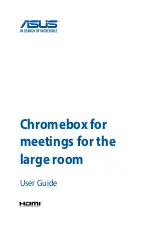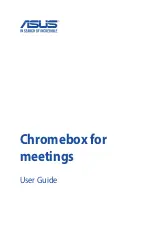
SigTEL Compact
Operator Instructions
SigTEL
Approved Document No. DAU0000092 Rev 4
Page 3 of 16
Emergency Voice
Communication System
1 Regulations
Disabled refuge systems are called for by DETR Approved document B (Fire safety) volume 2, section 4, Design
for vertical escape and BS 5588 Fire precautions in the design, construction and use of buildings, Part 8, Code of
practice for means of escape for disabled people.
Fire telephone systems for buildings are called for by BS 5588 Fire precautions in the design, construction and use
of buildings Part 5; Code of practice for firefighting stairs and lifts, Part 10; Code of practice for shopping complexes
and Part 11; Code of practice for shops, offices, industrial, storage and other similar buildings.
Fire telephone systems for sports venues are called for by the Guide to safety at sports grounds.
The installation of EVCS is covered by BS 5839-9 Fire detection and fire alarm systems for buildings
– Part 9: Code
of practice for the design, installation, commissioning and maintenance of emergency voice communication
systems.
2 Safety
The Emergency Voice Communication System (EVCS) is safe to operate provided it has been installed in
compliance with the manufacturer’s instructions and used in accordance with this instruction.
DO NOT open the control enclosures as Mains voltages are present inside. There is no need to open these
enclosures except to carry out maintenance, or remedial work. Such work must be carried out by the service
company responsible for the EVCS.
If equipment is damaged in any way, advise the person responsible for the EVCS at the site.
Regular servicing of the EVCS is required by BS 5839-9, by a competent organisation on a continuous maintenance
contract. A fully itemised report of the status of the installation should be obtained at least once a year.
Management of the site is required by law (The Regulatory Reform (Fire Safety) Order 2005) to appoint a
responsible person to ensure the EVCS (and other safety systems) remains operational.
3 System Overview
The EVCS provides reliable two-way communication between one or more permanently manned control rooms and
key points on the site in a fire emergency. The EVCS comprises of fire telephone and/or disabled refuge systems.
Fire telephone systems are for use by trained people as part of the fire safety procedures at the site. Disabled refuge
systems are for use by untrained people communicating with a trained Operator.
The two systems differ from a standard telephone or intercom system in the following ways:
Outstations do not have to dial the current master unit, they call as soon as their handsets are picked up
(at Type A outstations), or the
‘Push to Call or Answer’ button is pressed (at Type B outstations)
Outstations cannot call other outstations
Type A (fire telephone) outstations may be in locked housings to prevent unauthorised access
The EVCS operates from Mains and has battery back-up in case of Mains failure so that it is always available
If there is a fault, a buzzer sounds intermittently at a wall or desk control unit. Details of the problem are
shown on the display. If the fault is not rectified the fault buzzer resounds after a period of 6 hours.
Note
: The system also has a disabled persons toilet alarm (DPTA) interface which is a secondary function to the
primary purpose of the EVCS.
4 Disabling the System
If a wall control unit is installed in a public area, the system may be disabled to prevent unauthorized or malicious
use. If this is the case, the system will be enabled either, automatically when the fire alarm operates, or manually
by operation of a break-glass call-point, or similar control. When disabled, the EVCS continues to check for faults
but the wall and desk control units are suppressed from making, or receiving calls until an external trigger is applied.
Disablement of the system is set up by a system engineer.


































